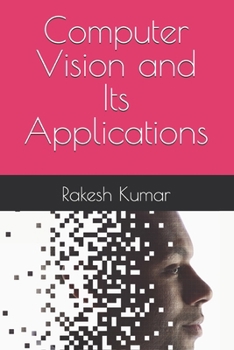Computer Vision and Its Applications
In the age of digital transformation, the way we interact with technology is evolving at an unprecedented pace. At the heart of this transformation lies the field of computer vision, a domain of artificial intelligence that enables machines to interpret and understand visual data from the world around them. From autonomous vehicles navigating complex urban environments to medical imaging systems detecting early signs of disease, computer vision is rapidly becoming a cornerstone of modern innovation.
The human ability to perceive and analyze visual information is one of the most sophisticated processes in nature. Replicating this capability in machines has been a long-standing challenge, but recent advancements in machine learning, deep learning, and computational power have brought us closer than ever to achieving this goal. Computer vision has progressed from academic research and experimental applications to becoming a critical component of industries such as healthcare, agriculture, retail, manufacturing, and entertainment.
This book, "Computer Vision and Its Applications", is designed to serve as a comprehensive guide to understanding the foundational principles of computer vision, exploring its cutting-edge techniques, and delving into its wide-ranging applications across various domains. Whether you are a student, researcher, industry professional, or technology enthusiast, this book aims to provide valuable insights into the world of computer vision and its transformative potential.
What Is Computer Vision?At its core, computer vision is the science and technology of making machines "see." It involves acquiring, processing, analyzing, and understanding digital images and videos to extract meaningful information. Leveraging algorithms and models, computer vision enables machines to identify objects, track movements, interpret scenes, and even make decisions based on visual data..
Why This Book?This book seeks to demystify the concepts and techniques of computer vision while showcasing its real-world applications. It blends theory with practice, offering readers a balanced understanding of:
The fundamental principles of computer vision, including image processing, object detection, and recognition.The integration of modern tools and frameworks like OpenCV, TensorFlow, PyTorch, and YOLO.Emerging trends in the field, such as vision for edge computing, quantum-enhanced vision systems, and ethical considerations.Challenges like bias in vision models and the need for privacy and data security.Each chapter is enriched with practical case studies, code examples, and discussions on the future directions of computer vision. Whether it's improving manufacturing efficiency, enabling smarter cities, or advancing healthcare diagnostics, the applications discussed in this book highlight the transformative impact of computer vision on our world...
Structure of the BookFoundations of Computer Vision: Introduces the key concepts and techniques for image processing and analysis.Applications Across Industries: Explores how computer vision is revolutionizing healthcare, agriculture, security, retail, and more.Emerging Trends and Challenges: Discusses the cutting-edge developments and the ethical and technical challenges in the field.Practical Insights and Tools: Provides hands-on guidance for developing computer vision projects using popular tools and frameworks.Case Studies: Real-world examples illustrating the successful deployment of computer vision technologies.




